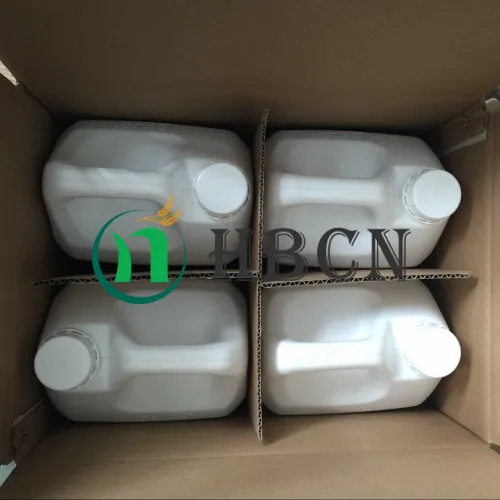
Dec . 01, 2024 11:30 Back to list
chlorothalonil 75 wp products
Understanding Chlorothalonil 75% WP Products Applications, Benefits, and Safety
Chlorothalonil, a broad-spectrum fungicide, has been widely used in agricultural practices for several decades. The formulation known as Chlorothalonil 75% WP (wettable powder) is particularly popular among farmers and agricultural professionals. This article delves into the characteristics, applications, benefits, and safety considerations of Chlorothalonil 75% WP products.
What is Chlorothalonil?
Chlorothalonil belongs to the class of fungicides known as chloronitriles, and it is primarily employed to control various fungal diseases in crops. Its broad spectrum of activity makes it effective against a wide range of pathogens, including those that cause leaf spots, blights, molds, and rots. The 75% WP formulation indicates that the product contains 75% active ingredient in a wettable powder form, making it easy to dilute and apply in various agricultural settings.
Applications and Crops
Chlorothalonil 75% WP is utilized in a variety of crops, including but not limited to
1. Vegetables Popular in the cultivation of tomato, potato, and cucumber, Chlorothalonil is effective against diseases such as late blight and downy mildew. 2. Fruits It is commonly used on fruit crops, including grapes and strawberries. The fungicide helps control conditions like powdery mildew and anthracnose.
3. Turf and Ornamentals Chlorothalonil is often applied in the maintenance of lawns and ornamental plants, providing protection against diseases that threaten aesthetic quality and health.
4. Field crops Chlorothalonil can also be applied to various field crops to combat diseases affecting yield and quality.
The versatility of Chlorothalonil makes it an essential component of integrated pest management (IPM) strategies
.chlorothalonil 75 wp products

Benefits of Chlorothalonil 75% WP
1. Broad-Spectrum Control One of the most significant advantages of Chlorothalonil is its effectiveness against a wide array of fungal diseases. This broad-spectrum capability means fewer applications of different fungicides are required, simplifying the management process for farmers.
2. Residual Activity Chlorothalonil offers long-lasting residual activity, allowing for sustained protection against fungal pathogens. This prolonged efficacy enhances crop health and yield potential.
3. Compatibility Chlorothalonil can often be tank-mixed with other fungicides or insecticides, providing a flexible approach to pest management. This compatibility contributes to maximizing crop protection while minimizing the number of applications.
4. Cost-Effectiveness The concentrated formulation of Chlorothalonil 75% WP means that less product may be needed for effective disease management compared to other formulations, translating to cost savings for farmers.
Safety Considerations and Environmental Impact
While Chlorothalonil is effective, it is essential to follow safety guidelines and label directions to minimize risks to human health and the environment. It is classified as a slightly hazardous substance, so personal protective equipment (PPE) such as gloves, masks, and goggles should be worn during application.
Furthermore, Chlorothalonil has raised concerns regarding its persistence in the environment and potential impacts on aquatic ecosystems. As such, it is crucial for users to monitor application rates and adhere to recommended safety precautions to mitigate environmental risks. Integrated pest management practices that combine cultural, mechanical, and biological controls alongside chemical applications can further reduce reliance on fungicides like Chlorothalonil.
Conclusion
Chlorothalonil 75% WP products play a vital role in the agricultural sector by providing reliable protection against fungal diseases across a wide variety of crops. Its broad-spectrum efficacy, residual activity, and cost-effectiveness make it a popular choice among farmers. However, with its use comes the responsibility of implementing safe handling practices to safeguard human health and the environment. By integrating Chlorothalonil into a comprehensive pest management strategy, farmers can achieve sustainable agricultural practices that promote both productivity and ecological health.
-
Kasugamycin Fungicide: Efficient Bacterial & Fungal Control
NewsAug.02,2025
-
Emamectin Benzoate: AI-Optimized Pest Control Solution
NewsAug.01,2025
-
Best Abamectin 95% | Top Pesticide for Crop Protection
NewsJul.31,2025
-
Insecticide Spirotetramat 11% + Thiacloprid 11% SC at Good Price
NewsJul.30,2025
-
Best Abamectin SDS - Premium Quality & Reliable Safety Data
NewsJul.29,2025
-
Agrochemicals Pesticides Solutions for Sustainable Farming
NewsJul.29,2025
